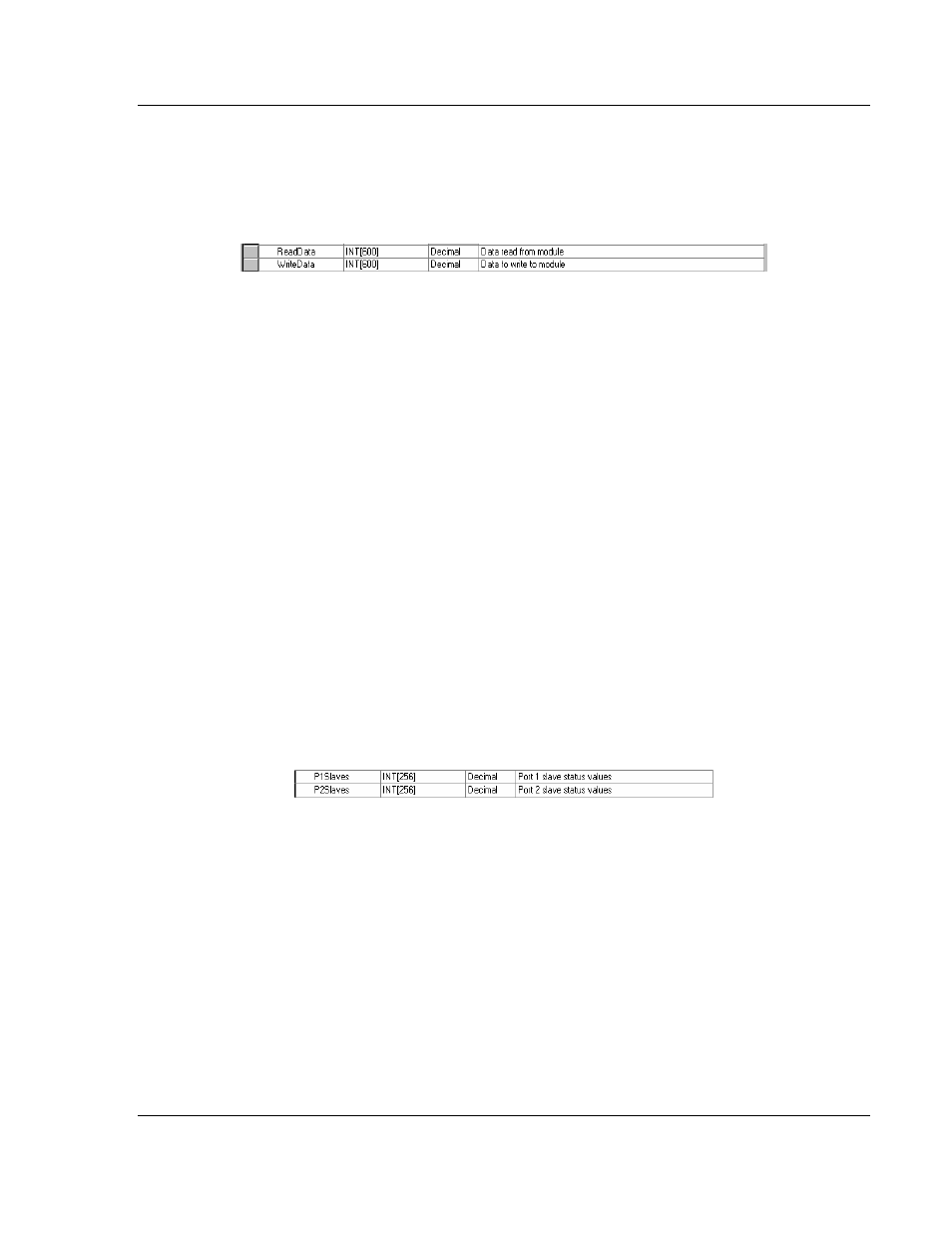User data objects, Slave polling control and status, User – ProSoft Technology MVI56-DFCMR User Manual
Page 43: Data, Objects

Ladder Logic
MVI56-DFCMR ♦ ControlLogix Platform
DF1 Interface Module with Reduced Data Block
ProSoft Technology, Inc.
Page 43 of 113
October 20, 2008
3.4 User
Data
Objects
These objects hold data to be transferred between the processor and the MVI56-
DFCMR module. The user data is the read and write data transferred between
the processor and the module as "pages" of data up to 40 words long.
The read data (ReadData) is an array set to match the value entered in the
ReadRegCnt
parameter of the DFCMModule object. For ease of use, this array
should be dimensioned as an even increment of 40 words. This data is paged up
to 40 words at a time from the module to the processor. The ReadData task is
responsible for placing the data received into the proper position in the read data
array. Use this data for status and control in the ladder logic of the processor.
The write data (WriteData) is an array set to match the value entered in the
WriteRegCnt
parameter of the DFCMModule object. For ease of use, this array
should be dimensioned as even increments of 40 words. This data is paged up to
40 words at a time from the processor to the module. The WriteData task is
responsible for placing the write data into the output image for transfer to the
module. This data is passed from the processor to the module for status and
control information for use in other nodes on the network.
3.5
Slave Polling Control and Status
Two arrays are allocated in the module's primary object to hold the polling status
of each slave on the master ports. This status data can be used to determine
which slaves are currently active on the port, are in communication error or have
their polling suspended and disabled. Ladder logic in the processor can be
written to monitor and control the status of each slave on a master port. The
objects used are displayed below:
Using special blocks, the processor can request the current data for the slaves.
Through the use of other blocks, the processor can enable or disable the polling
of selected slaves.
